Septum piercings are still big news, with over 300,000 average monthly searches globally and 5 million Instagram hashtags. In fact, according to Jewellerybox, they are the most popular piercing in the world. No wonder that so many of our favourite celebrities have been known to jump on board with septum piercings over the years.
Ever since Jessica Biel decided to step out in 2013 with a clean and chic septum ring (many also call this a bull nose piercing), followed by the likes of Rihanna and FKA Twigs (who has made it an integral part of her look), septum piercings have become a big trend. Everyone from Zendaya to Zoe Kravitz and Florence Pugh has rocked either a fake or legitimate septum ring, and that number is only going to rise as the months go on. Just like ear piercings, septum piercings won't ever go out of style.

With this in mind, read below for our quick fire run-through on all things septum-related including septum piercing placement, the cost of septum piercings and the aftercare involved after getting it done.
What is a septum piercing?
A septum piercing is a piercing that goes through your nasal septum, AKA that bit between your nostrils. The needle goes through the thin section of flesh towards the front of the nose, and then the jewellery is put in place– normally a ring, a horseshoe or, less commonly, a bar. Many refer to a bull nose piercing when a hoop-shaped piece of jewellery is used, so you might have heard of that, too.
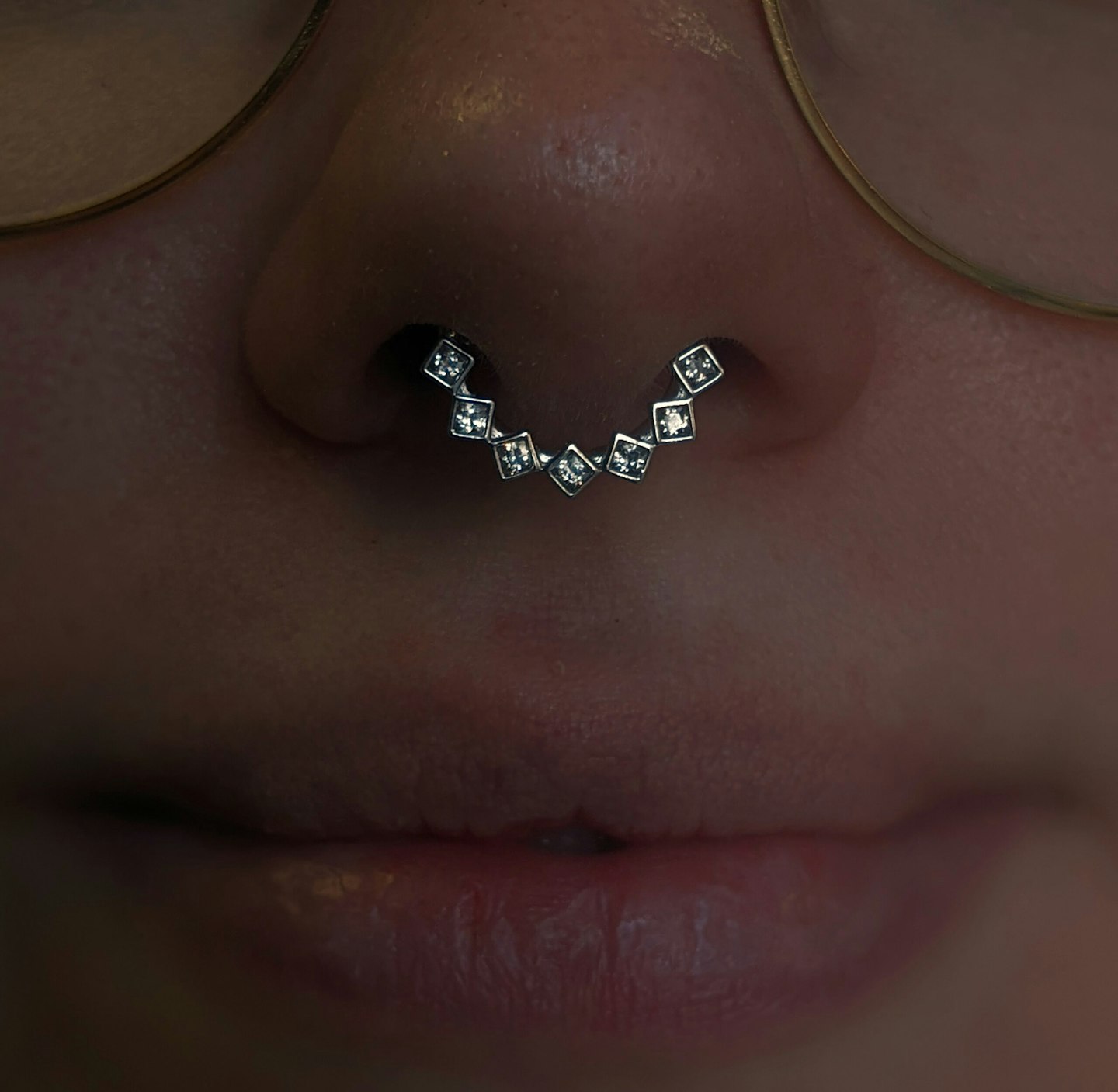
Do septum piercings hurt? And how badly do septum piercings hurt?
Most piercings can be uncomfortable. After all, a needle is pushed through your skin, which is then replaced with a thick bit of metal. Everyone has their own pain tolerance, so it’s worth bearing yours in mind, but a septum shouldn’t hurt much more than a standard nose piercing and it shouldn’t go through cartilage. It will likely involve a strong pinch, the urge to sneeze, watery eyes, and hopefully not much more than that.
Hazel, also known as @botanical.piercer, explains, 'a septum piercing is super easy although often gives off a hardcore look. This is pierced through a very thin area in the septum called the "sweet spot" and I'd say it's the least painful piercing on the face.'
Jamie Kelly, manager of Underground Tattoos in Watford, adds, 'The septum can seem like it would be higher on the pain scale compared to, say a lobe piercing but it isn't as bad as people think. It'd be a 6/7 on the pain scale but it makes your eyes water a lot.'
How are septum piercings done?
Septum piercings are a lot like most piercings, and there can be some variation in method. Usually, however, your piercer will clean the area intended to be pierced before using a small clamp to hold the septum. They will then pass a cannula (a hollow needle attached to a tube) through your nose, before putting the jewellery through the new hole. After the jewellery is secured the piercing is complete.
Hazel uses a sterile needle to perform septum piercings which, 'usually initially houses a circular barbell or casually known as a "horseshoe" or, a decorative seam ring or fixed bead ring. We don't recommend putting seamless hoops in straight away as gaps can cause healing issues.'
How much do septum piercings cost and how do I choose a piercer?
At this point, it’s probably worth noting that you should never skimp on piercings – it’s much better to pay a little more and visit a really good, certified piercer than to save a few pounds. Septum piercings usually run around £15-£40, so find the most legit piercing studio near you and see how much they charge. On average, you can expect to spend around £30.
As for who should be conducting piercing treatments, world-renowned piercer and fine jewellery brand founder Maria Tash explains, 'I would always suggest finding a piercer who is experienced, has a great reputation, and one that makes you feel comfortable. Maria Tash piercers are extensively trained in our forward facing philosophy and use precise needlework to make sure the new piercing works harmoniously with existing ones, and are spaced and angled beautifully.'
On picking the right piercer, head piercer at luxury piercing parlour Laura Bond in Edinburgh, Sarah Crowe, also adds a reputable establishment 'should have their piercers licences displayed on the wall in a place that is easy to see. They should also be able to answer any questions about jewellery quality, the sterilisation process and their experience. If they are at all rude about sharing this or they can’t give you this information then run a mile. The same goes if anyone suggests piercing with a gun.' It's important to go to a highly skilled piercing specialist to avoid any risk of infection.'
Do septum piercings go through cartilage?
No. When it comes to septum piercing placement, an experienced piercer should go through your 'sweet spot' – the area of flesh between your cartilage and the front of your nose so it should be similar to the side of your nose being pierced. Hazel adds, 'I don't recommend piercing into cartilage as this is usually super painful and slow healing.'
Kelly adds, 'the piercing should never go through the cartilage as this can be damaging, there is a soft spot below called "the sweet spot" which is where it will correctly sit.'

Septum piercing aftercare
To aid healing, cleanliness is key. Always wash your hands before touching your nose, avoid twisting or flipping the septum piercing, and take care in washing the area two to three times a day with a saline solution, especially for the first eight weeks of having had your piercing.
Kelly says, 'The aftercare should be given the same as any other piercing, using a sterile saline solution is always the safest and best. We recommend twice a day and to avoid movement of the jewellery for best results.'
Dr Sonia Khorana, GP and dermatology expert, concurs, 'A septum piercing requires careful attention and after-care to prevent infection. It is really important to clean the septum of the nose thoroughly before and after piercing – your nose harbours a lot of bacteria, so you might want to even postpone the piercing if you’re down with a cold. I would also advise avoiding the piercing if you have regular allergies as the area can get irritated easily so may heal poorly.'
How long does a septum piercing take to heal?
While the most tender and painful part of healing should be over in around one to three weeks, septum piercings have an 'average healing time of eight to twelve weeks but each piercing differs from person to person so it can sometimes take longer,' says Kelly.
It can take longer for the piercing to completely heal and you can change the jewellery in six to eight weeks providing it’s well-healed. You should try and leave it as long as possible, though, to ensure it's properly healed to avoid infections. As with all piercings try to leave it alone, and clean your piercing with saltwater daily. There are good saline solution sprays out there too, which work better with all nose piercings due to the placement.
A small amount of white discharge is completely normal, but if you notice any yellow or green pus, your piercing may be infected. However, your piercer should give you all the necessary aftercare information, and if you have any worries at all you can return to them to get the piercing looked at. Dr Khorana adds, 'If it gets infected - you need to go see a doctor. You might need to remove the piercing jewellery for healing. Topical or oral antibiotics may also be needed depending on the severity.'
What do I do if my septum rejects?
Master piercer and fine jewellery brand founder Maria Tash explains it is unusual that the body would reject a well placed piercing with proper jewellery. But if you ever find yourself concerned, she clarifies when visiting one of her branches, 'the Maria Tash team would first assess the fit of the jewellery in the existing piercing. Sometimes the body will try to move the jewellery and swell when the fit of the piece is too tight. This situation can be rectified with a longer post or larger ring. If the piercing was not well angled, the body may sometimes shift the jewellery to a place that is not being torqued.
'If the piercing was done in a way that did not capture enough tissue the body may try and reject it - that solution would be to pierce it deeper. And sometimes, in the case of certain flat navel tissue or with surface piercings, the body will not like the jewellery placement and try and push it out. Any redness or visible line on the skin indicating movement should be discussed with an experienced piercer to determine if it is a matter of irritation, fit, infection, or a need to move the piercing to a different spot.'
Why does my septum piercing smell?
I’m going to get a little gross with you…that’s pretty common, and people have been known to call it septum funk. If the smell is combined with pain, yellow pus, or blood, you might have a problem. 'This is usually because of sebum and dead skin cells that build up around the piercing. It’s totally normal and happens with any piercing. Your nose is a warm, moist place, perfect for bacteria, and that’s what can cause the smell,' Kelly points out. Keeping the piercing clean and switching to wood or glass jewellery in due time should help to limit the smell, though.

Do septum piercings close fully?
As with most piercings, this depends on how long you’ve had it for and the condition it's been kept in, but Kelly confirms septum piercings can close up, 'especially if they’re not fully healed or if they’ve been stretched. How quick it closes varies, it could take a few weeks or months, and depends on your body and how long you’ve had the piercing. You can’t really rush or drag out the process. As for re-piercing, you’d want to wait until it’s properly healed up, which might take several months.'
How do I change my septum piercing?
After waiting for around six to eight weeks (yes, really) you might be thinking about changing your septum jewellery, maybe you're swapping from a horseshoe style piece of jewellery to a hoop that many associate with the bull nose piercing look. You can consider going back to your piercer and having them talk you through it, but alternatively, it shouldn’t be too hard to do this at home.
'Changing it is pretty straightforward. Make sure your hands and the new jewellery are clean. Carefully take out the old one, which usually involves unscrewing or opening up a hoop, then pop in the new piece. If you’re not sure, especially if it's your first time, it is best to see a pro piercer,' Kelly advises.
If your original piercing is held in with balls, simply unscrew one and slide it out. It might be screwed in a little tight, so consider going back to the piercer to have them do it. There are different types of jewellery so it’s worth looking for specific advice, but you should try and put the new jewellery in as soon as possible. Once the area and jewellery are disinfect, line up the bar with the hole before pushing it cleanly through. You may need to pull your nose down a little to get it right, or it may take a few goes to find the hole. The same rules apply for other kinds of rings or bars, too.

How do I remove my piercing?
Depending on the kind of jewellery you’ve been pierced with, either remove the balls or undo the clicker with clean hands before sliding the bar out of your nose. Kelly adds, 'gently open the hoop or unscrew the ends, depending on what you’ve got in. Just be gentle and keep everything clean to avoid any irritation.'
How do I flip my septum piercing up?
If you have horseshoe-type septum jewellery, you should be able to hide the piercing for school, work, or hanging out with your nana. There are different methods so consult your piercer, but usually you just pull your mouth skin down so the piercing is more visible; then push the balls up until the jewellery goes into your nose. This will get easier the older the piercing is and the less swollen your nose is.
How do you stretch septum piercings?
'Stretching should be done bit by bit. Ideally, get a piercer to help you out. It’s about using slightly bigger jewellery over time to gradually increase the size of the piercing. You’ve got to take it slow to avoid any damage. There are tools to help this along like tapers,' Kelly illuminates.
Usually, your septum will have been pierced with 16g/1.2mm jewellery, or 14g/1.6mm. If you’re looking to stretch it to be an even bigger hole, as Kelly points out, you'll need to do this at a steady pace as the cartilage will start to migrate up the nose. Consult your piercer, but many people recommend waiting between four and six months before starting to stretch. You should then wait a couple of months between gauges, too.
There are different methods, but most common is to (with clean hands, disinfected jewellery, and a clean nose) massage your septum withjojoba or other oil. Then, you should get an insertion pin one or two gauges up from your initial jewellery – i.e., 2mm (12g). Push the pin through your septum, then line the new plug with the biggest end of the pin, pushing the pin out with the jewellery and effectively replacing it. Do not go up more than a mm every month or two, and listen to your body.
What metals and jewellery styles are best for septum piercings?
Hoops and horseshoes are the most common types of septum piercing jewellery styles, but there are other things to consider, too. Kelly explains, 'it is best to stick to hypoallergenic metals like titanium, or niobium. Gold is a good option too, but make sure it is at least 14k or 18k and nickel-free.'
'Style-wise, it's whatever you fancy, but captive bead rings, seamless rings, and circular barbells are pretty popular. Just make sure whatever you pick is top quality and right for your piercing.'
Shop: The Best Septum Jewellery
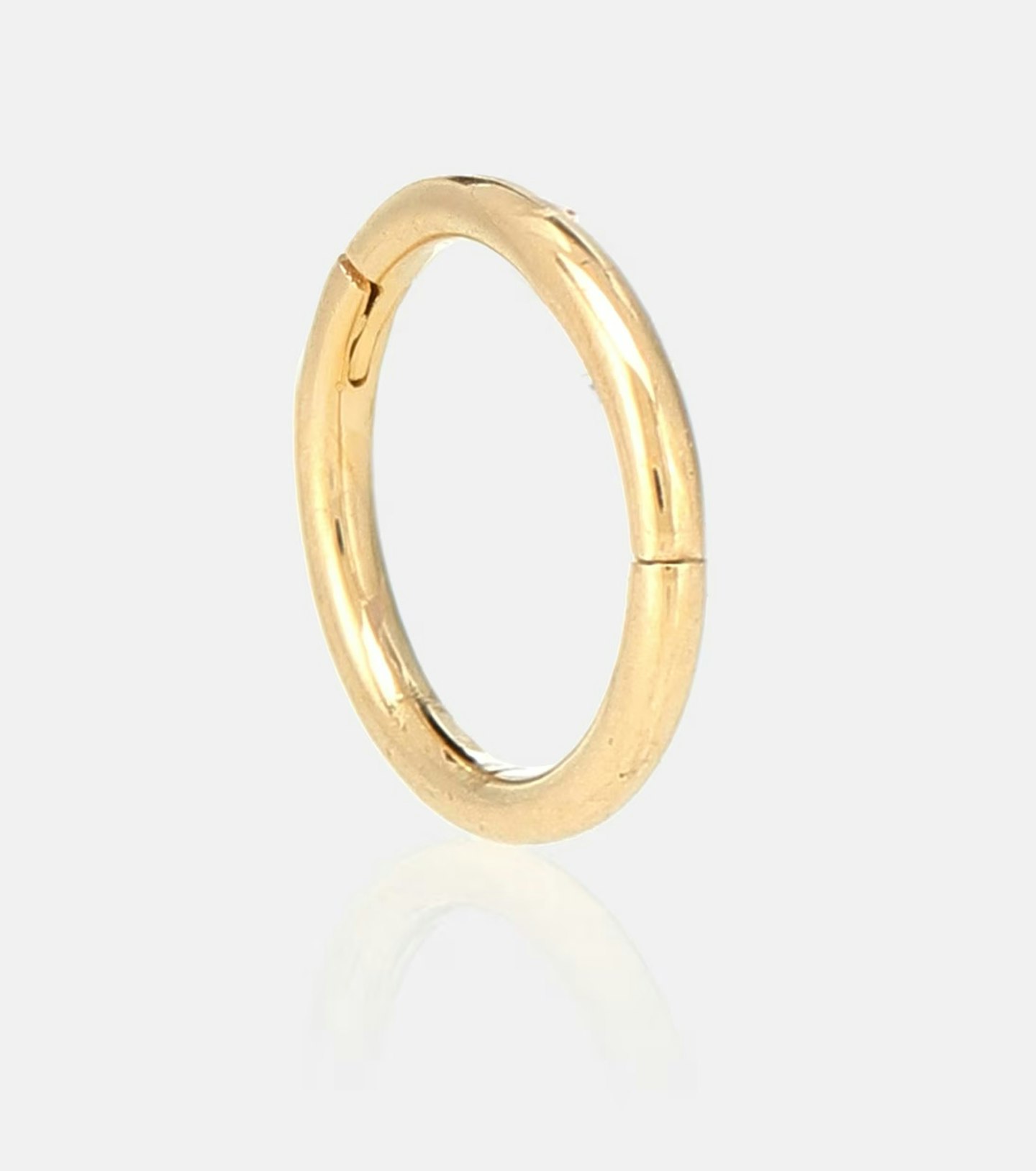
www.mytheresa.com
For a classic, minimalist hoop, look to Maria Tash. The simple clicker design should make it easy to secure in place.
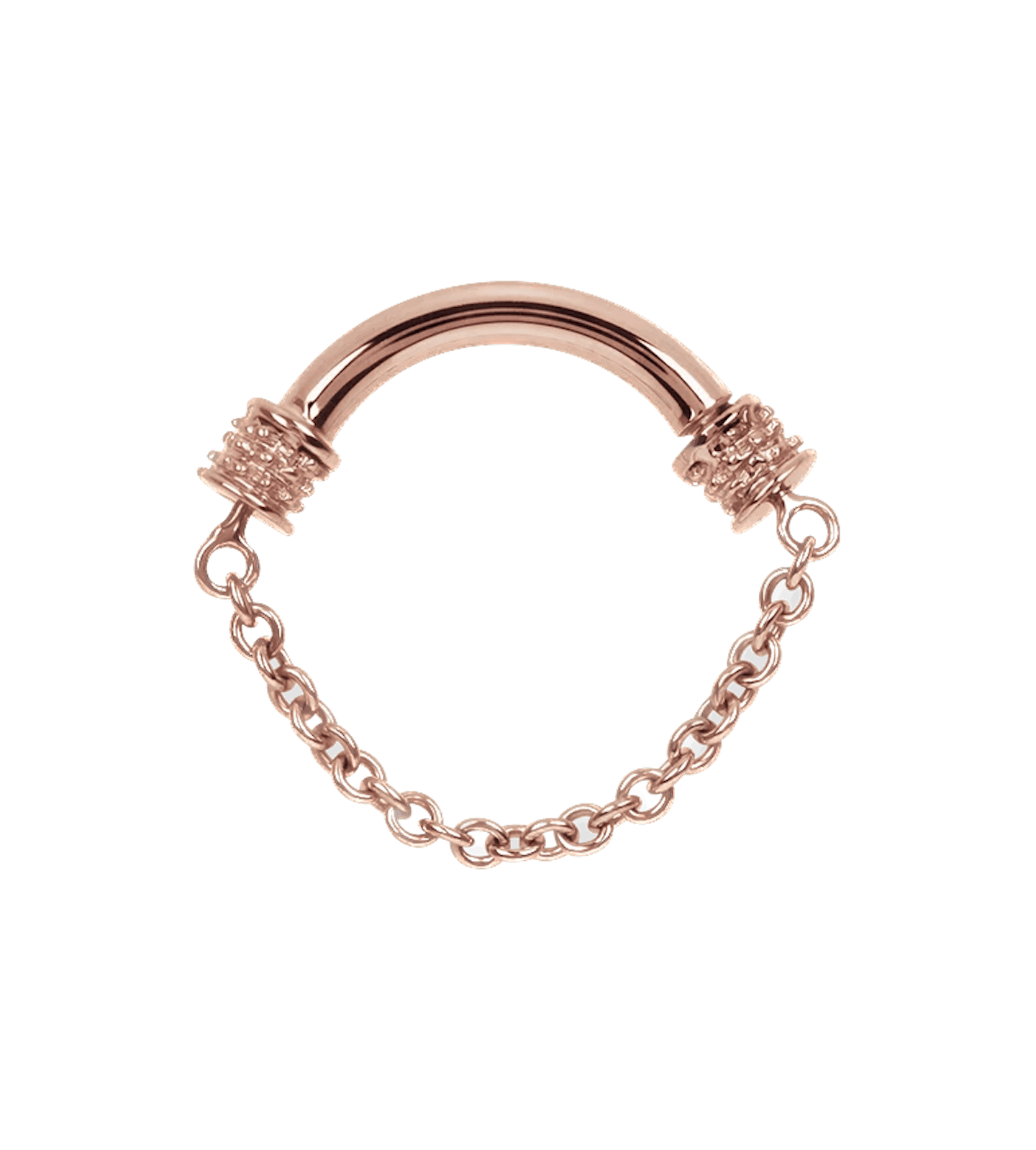
www.mariatash.com
This pretty rose gold chain design will hang down under your nose for a more delicate look than a thick bar. It also comes in white gold.
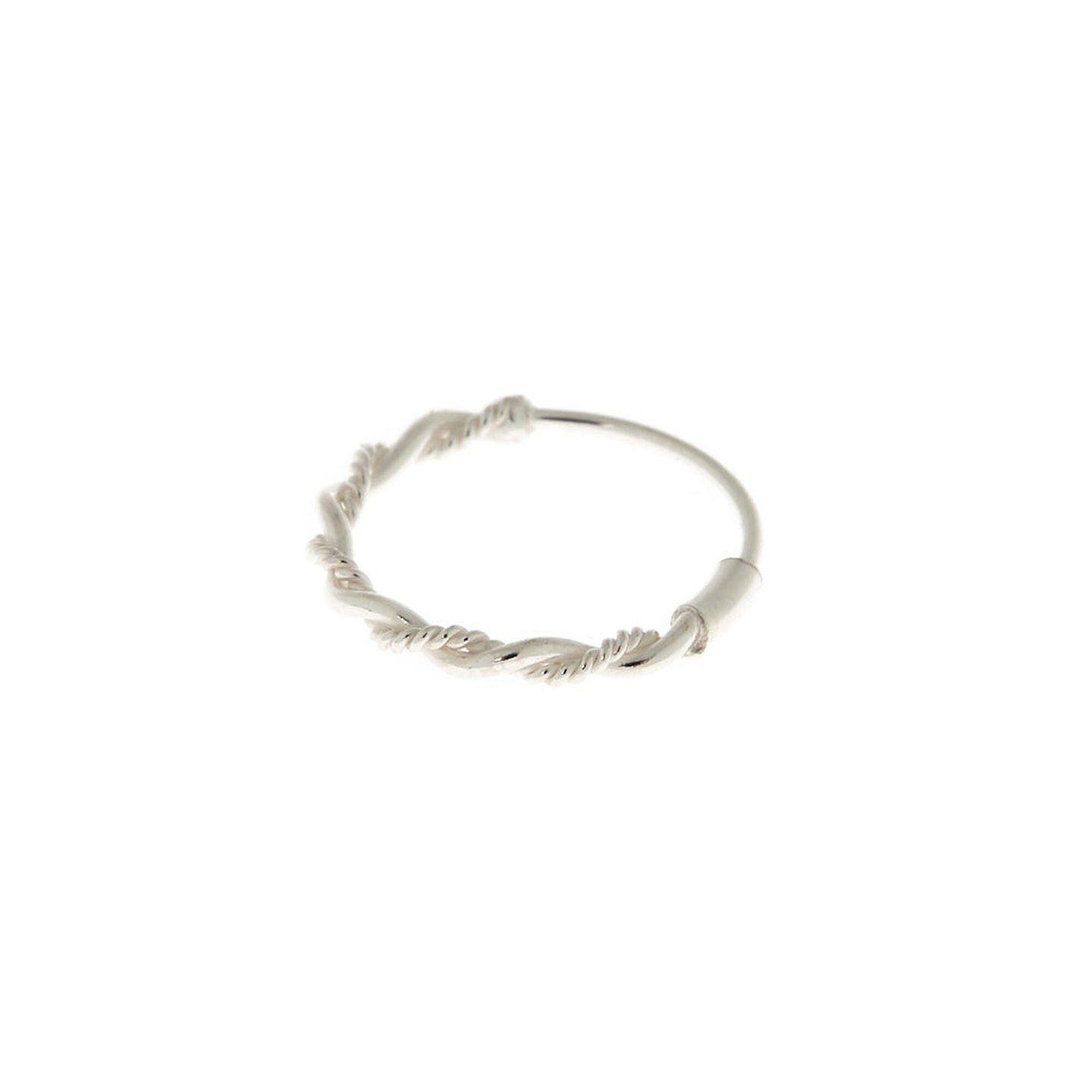
www.claires.com
For a simple fuss-free hoop, with a twist (quite literally), this braided sterling silver style is an affordable option.
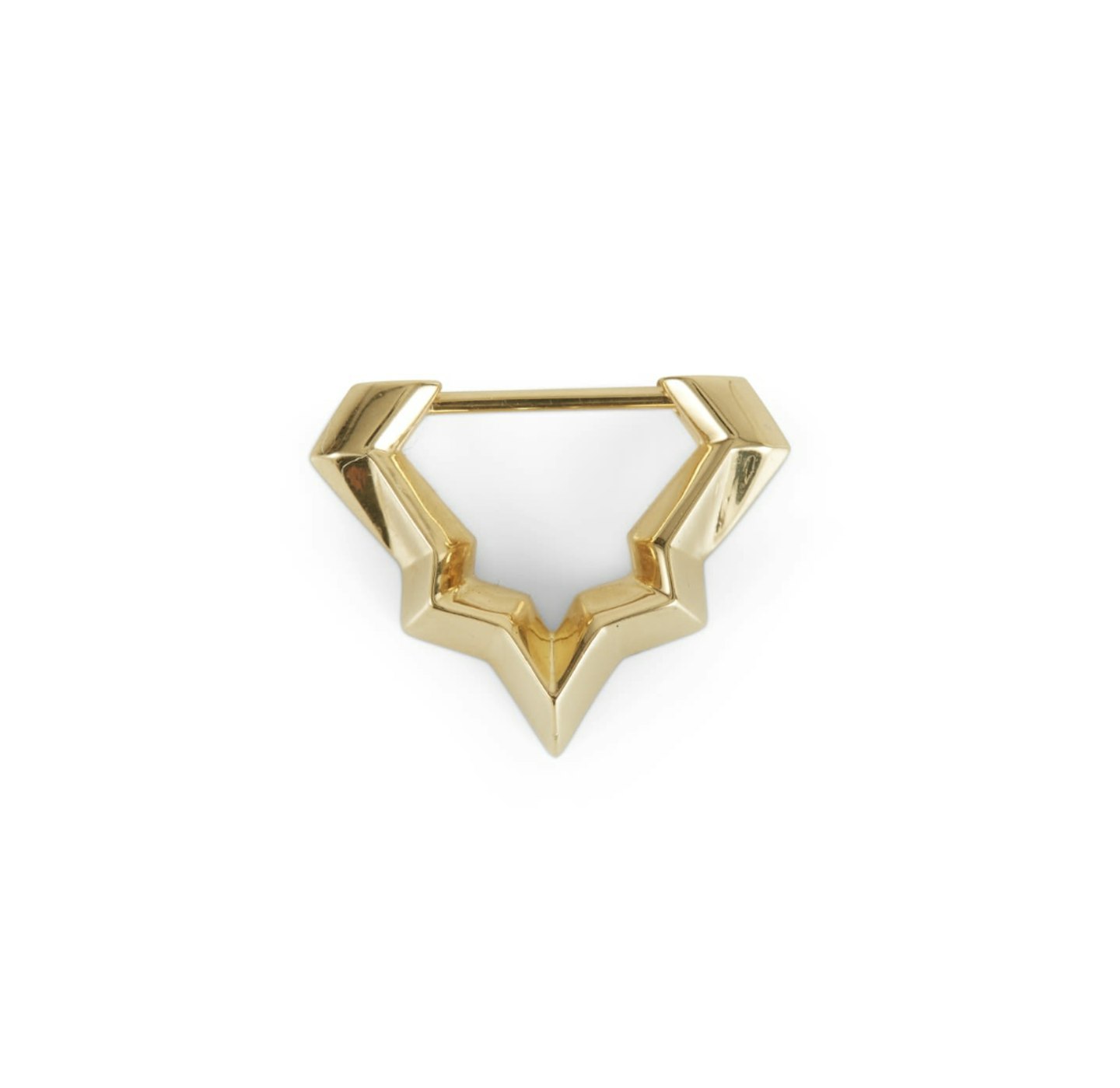
www.wolfandbadger.com
For a more dramatic piece of jewellery, Rihanna-style, opt for this grungy chunky gold version.
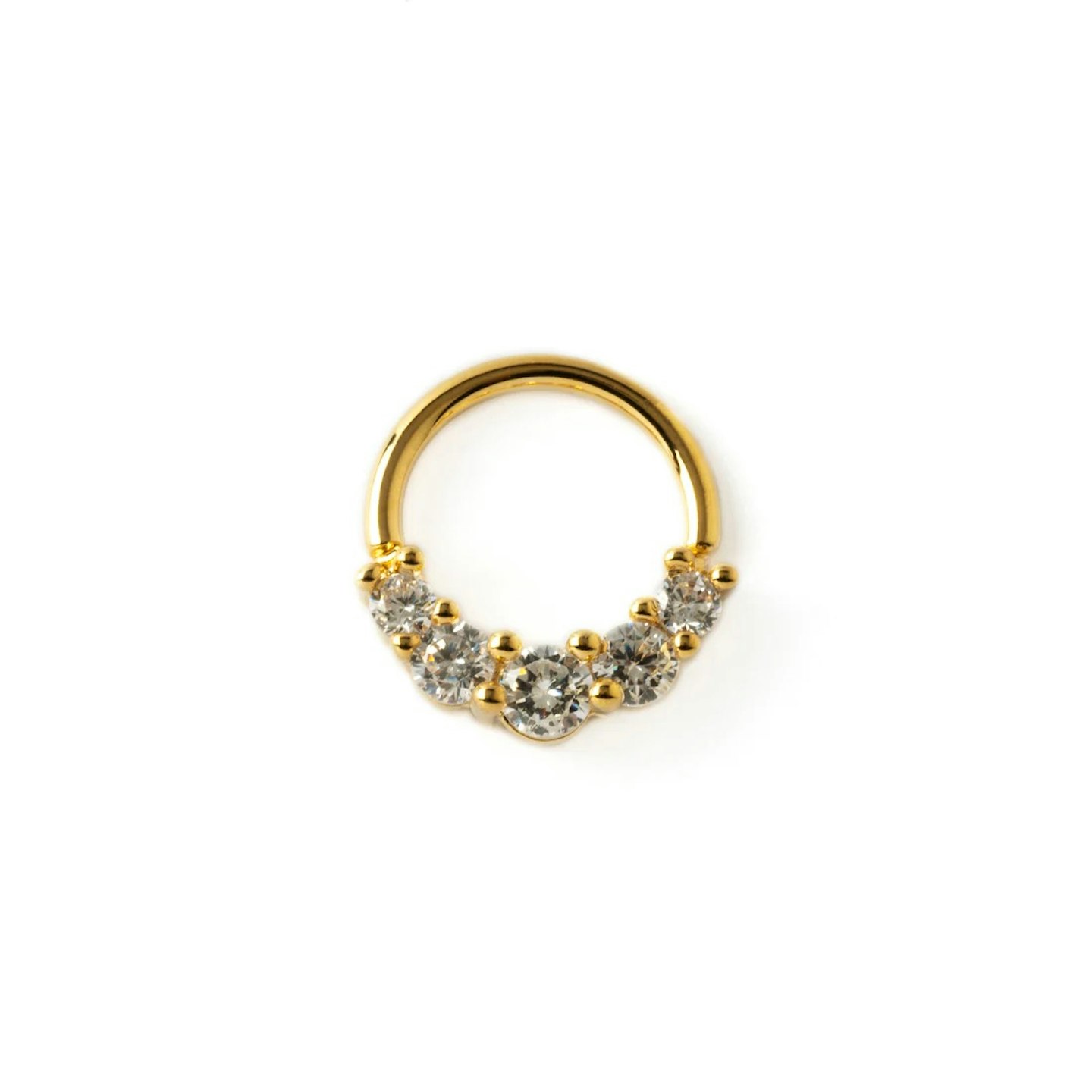
tribu.co.uk
Forget chandelier earrings, crystal-encrusted septum rings are the new statement accessory. Made from surgical steel and gold coated, this sparkly ring is an easy way to update an otherwise simple bar style.
Sameeha Shaikh is Grazia UK's Beauty Writer, working across all categories to bring you insights on the latest trends, industry news and the products you need to know about, viral or not (most probably viral).

